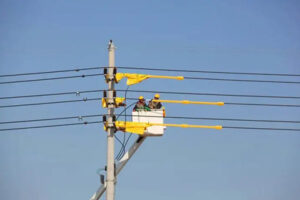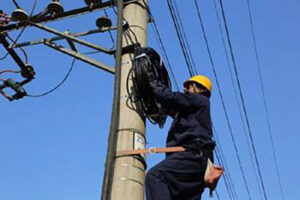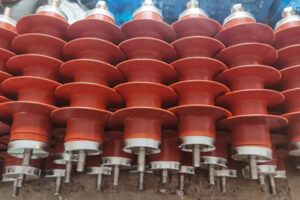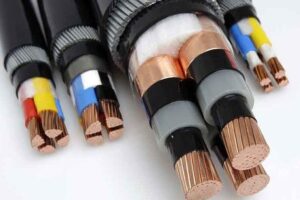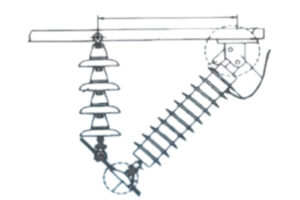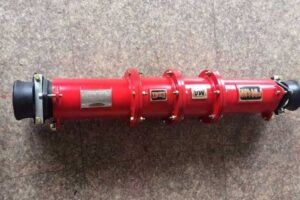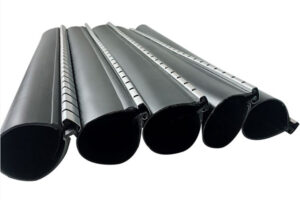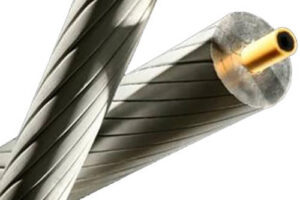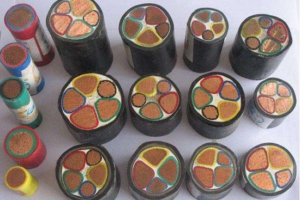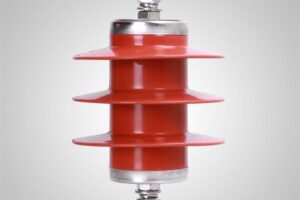The transmission line connection point is a major weak point of inline operation. In the operation of often heat burned, thus causing power outages. The analysis of the wire connection point heating problem, and timely adoption of appropriate preventive measures, will effectively avoid the wire connection point overheating. This causes the wire connection point to burn off the accident. Analyze the causes of wire connection point heating, and understand the theoretical basis for the temperature rise of high-voltage lines. At the same time, mastering the prevention and solution measures to deal with the connection point heating problem, to ensure the safe and reliable operation of the line has practical significance.
Imformation
How To Set Up Overhead Fiber Optic Cable?
Fiber optic cable construction is roughly divided into the following steps: preparation → routing project → fiber optic cable laying → fiber optic cable splicing → project acceptance.
What is The Correct Procedure for The Installation of Zinc Oxide Surge Arresters? And What are its Advantages?
What Is The Correct Procedure For Installing Zinc Oxide Surge Arresters?
The zinc oxide arrester uses zinc oxide resistance as the main component, which greatly improves the voltammetric characteristics of the arrester and increases the through-current capability. When the arrester is in normal operation, the voltage flow through the arrester current is only microampere. When the overvoltage is received, the excellent non-linear characteristics of the arrester play a good role.
A lightning arrester is mainly used to protect electrical equipment from lightning intrusion overvoltage and operating overvoltage on its power equipment insulation damage.
What Type of Insulation Material to Choose for Wire and Cable in Different Environments?
The insulation material of wire and cable is an important structure to ensure the proper operation of the conductor. The operating life of the insulation material is an important indicator of the life of the cable. Usually, what are the insulation materials we use for wire and cable?
Read moreWhat Type of Insulation Material to Choose for Wire and Cable in Different Environments?
The Principle And Role Of A High-Voltage Line Arrester?
(1) The Role Of High-Voltage Line Arrester
High-voltage line arrester for 6 ~ 220kV AC transmission lines, is a new type of lightning arrester suspended and installed on the transmission tower.
Read moreThe Principle And Role Of A High-Voltage Line Arrester?
Types Of High Voltage Power Cable Joints
In the case of high-voltage transmission line construction, many people working on projects often come across high-voltage power cable joints. Today, I would like to discuss the types of high voltage power cable joints and their applications with you. First, let’s talk about what high voltage power cable joints are.
Introduction to Flame Retardant Heat Shrink Tubing
The main role of heat shrink tubing in a circuit is to protect important devices and circuits from damage and impact. Although it does not have any particular impact on the operation of the circuit, it is often the key point that determines the success or failure of the entire design. With the rapid development of the electronics industry, flame-retardant heat shrink tubing is also inseparable from the electronics industry, more and more electronic products need to use flame retardant heat shrink tubing for protection. The flame retardant processing of the heat shrink tube, when attacked by external fire sources, can effectively block, delay or stop the transmission of flame, to achieve the effect of flame retardant.
Aluminum Conductor Composite Core Cable (ACCC) Advantage Introduction
At present, overhead cables are used to transport electricity over long distances. Conventional cables are mostly aluminum conductor steel reinforced (ACSR). Since the 1990s, carbon fiber composite cores (aluminum conductor composite core) have been used as the core bar of cables. ACCC has the following advantages over traditional conductors.
Read moreAluminum Conductor Composite Core Cable (ACCC) Advantage Introduction
What Do I Need to Pay Attention to When Preheating Wire and Cable Conductors?
Wire and cable are used to transmit electrical (magnetic) energy. Information and the realization of electromagnetic energy conversion of wire products. Broadly speaking, wire and cable are also referred to as cable, and narrowly speaking, cable refers to insulated cable. It can be defined as a collection of the following parts: one or more insulated wire cores, and they may have their cladding, total protective layer, and outer sheath, the cable can also have additional conductors without insulation.
Read moreWhat Do I Need to Pay Attention to When Preheating Wire and Cable Conductors?
White Ceramics On Power Poles—Electrical Insulators
The main role of electrical insulators is to provide mechanical fixation and electrical insulation for electrical equipment and conductors in power transmission and supply lines. Insulators are currently available in three main materials, namely ceramic, tempered glass, and organic composite materials. Insulators have played an important role in the development of the electric power industry.
Read moreWhite Ceramics On Power Poles—Electrical Insulators
